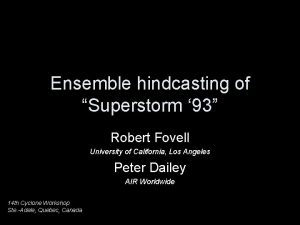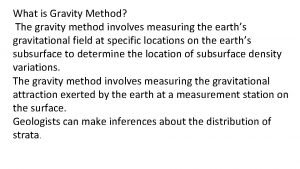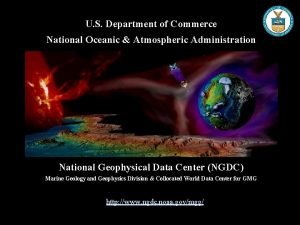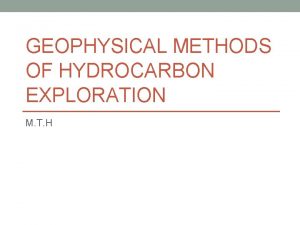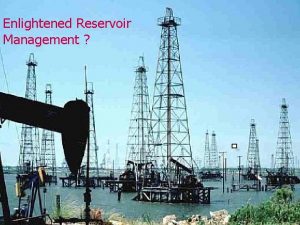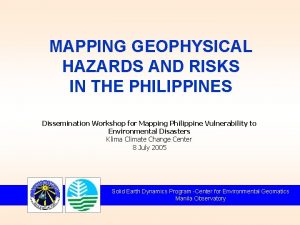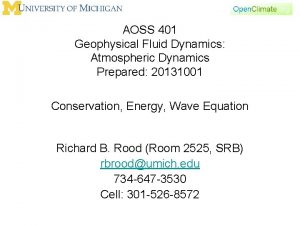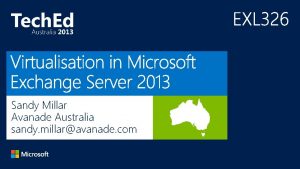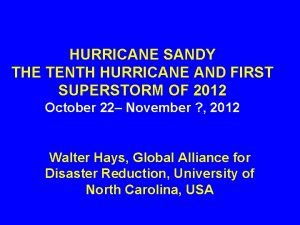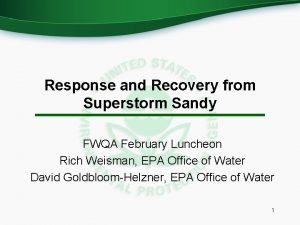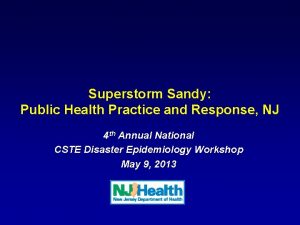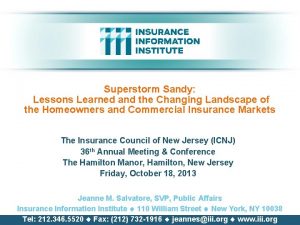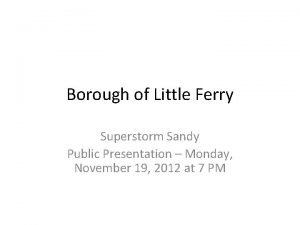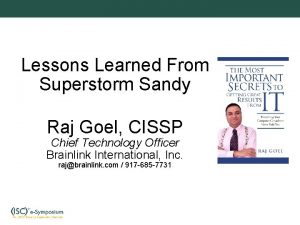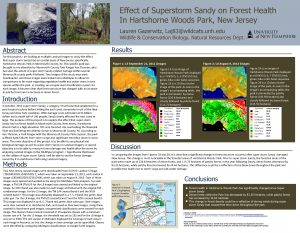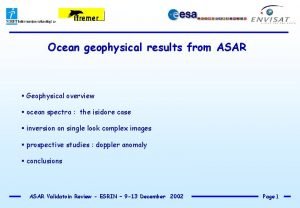Superstorm Sandy Geophysical and Human Activities Impacts Theo













- Slides: 13

Superstorm Sandy: Geophysical and Human Activities Impacts Theo Kioussis & Patrick Fullerton Hampton Direct Broadcast Workshop 09 June, 2017

Background What became known as “Superstorm Sandy” formed in the Caribbean on October 22, 2012 as a tropical depression Struck Eastern Cuba on October 25, 2012 as a Category 3 Hurricane Struck the Eastern U. S on October 29, 2012 near Atlantic City, New Jersey Wreaked havoc on much of the U. S’s east coast as well as Caribbean Islands


Preliminary Hypotheses: We will be able to identify a difference in land features before and after the storm as a result of land scarring and flooding wrought by the storm We will identify effects on human structures/activities Such things as power outages, instances of boating

Methods: The VIIRS DNB is useful for assessing the storm’s impact on human activities MODIS bands 1 & 2 were most useful for viewing surface and land features in assessing for land scarring/flooding

Boats: VIIRS DNB 10/28/12

VIIRS DNB 10/28/12

VIIRS DNB image of Cuba 10/28/12

VIIRS DNB Image of Cuba Last Night

Sandy Aftermath in Haiti/Dominican Republic Haiti/D. R Yesterday “This is a disaster of major proportions, ” Haitian Prime Minister Laurent Lamothe told the Associated Press. “The whole south is under water. ” (Ferreira)

Conclusions: One cannot always access the data that one wants to The data that is available isn’t always perfect We were, however, able to identify some of the features that we sought, demonstrating that the available data is quite useful

Where to go from Here: Cross-referencing data Archived data: something more than we have access to? We would prefer a before and after approach, as was the initial intention

Consulted Works: https: //www. livescience. com/40774 -hurricane-sandy-s-impactinfographic. html https: //www. weather. gov/images/okx/Sandy/Track_NHCreport. png https: //www. livescience. com/24380 -hurricane-sandy-status-data. html http: //world. time. com/2012/10/29/in-haiti-hurricane-sandy-leaves-behinddeath-and-devastation/
 Superstorm 93
Superstorm 93 Gravity corrections
Gravity corrections National geophysical data center
National geophysical data center Gravity method of geophysical exploration
Gravity method of geophysical exploration Reservoir geophysical corporation
Reservoir geophysical corporation Earthquake-induced shallow landslides in the philippines
Earthquake-induced shallow landslides in the philippines Geophysical fluid dynamics
Geophysical fluid dynamics Indoor or outdoor sports
Indoor or outdoor sports Primary and support activities
Primary and support activities Primary activities definition
Primary activities definition Operating activities vs investing activities
Operating activities vs investing activities Sandy feels dirty unless she bathes and changes
Sandy feels dirty unless she bathes and changes Material technology positive and negative impacts
Material technology positive and negative impacts Materials technology positive impacts
Materials technology positive impacts
